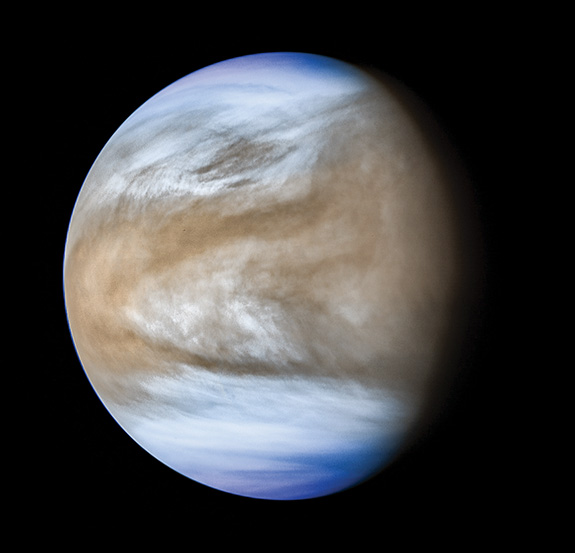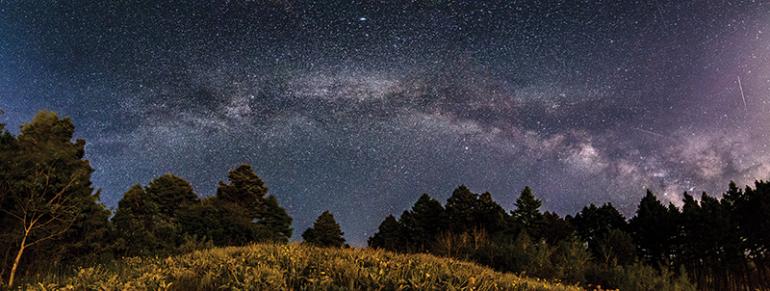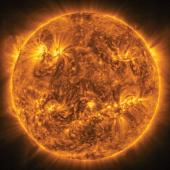Flash Mob
Bright shiny things in spring's night sky.
Spring in Montana can be a sometimes thing. But whether we’re looking up from snow or flood or mud or some other sketchy transition from skis to mosquito repellant, we always have the steadfast sky—right? Except when it changes from time to time.
This spring, we find a Bright Shiny Thing blazing in the western sky after sunset that we don’t always see there. Often the prompter of numerous UFO calls to the local planetarium, it is none other than the planet Venus in one of its glorious apparitions as an “evening star.”
The Earth’s “sister planet” (in size if not temperament) is coming around the eastern side of its orbit as we look at things, placing it left of the sun and nicely displayed for viewing after sunset and during happy hour on the slopes or on the trail. It reaches greatest eastern elongation—its farthest-east position from the sun from our view—on March 24, five days after the alleged start of spring in the northern hemisphere. Unmissable in the darkening west, it continues to brighten until the end of April as it gets closer to us in its orbit—the brightest object in the sky after the sun and moon. Through the early evenings of May, it plunges horizonward as it begins to pass between us and the sun in its closer orbit of our star, and is lost in the solar glare by month’s end.
In the meantime, it teams up with other Bright Shiny Things at regular intervals. The crescent moon is in rendezvous with the planet on the nights of March 28, April 26, and on May 23 just before it exits the evening sky. And on April 3, it snuggles along the eastern edge of the Pleiades star cluster in the west.

Venus’ beauty and brightness has always been of note to Earthlings—a celestial femme fatale from the start. It was associated with the Sumerian Inanna, goddess of both love and war, before it specialized in love among the Greeks and then the Romans who gave the planet its current moniker.
Even in the era of science, Venus is not what she seems. Her bright, lovely face is produced by a highly reflective cloud cover—of sulfuric acid mists. And they mask a surface devastated by runaway global warming, volcanic action, and an infernally hot atmosphere of crushing pressure. Some recent evidence suggests that Venusian volcanoes may still be flowing.
Not a good destination for spring break, Venus nonetheless remains a magnificent sight in the evening sky.
And there are other Bright Shiny Things to enjoy this spring as well. The full moons of March 9, April 7, and May 7 are all “supermoons”—full moons occurring near perigee (their closest approach to Earth). That means they’re a little bigger and a little brighter than normal full moons.
And on the night of April 21-22, transient Bright Shiny Things in the form of shooting stars will flash in the sky from the direction of the constellation Lyra, which rises by midnight. The annual Lyrid meteor shower can modestly produce up to about 15 meteors per hour on its peak night, and with the moon in new phase, the sky will be dark for viewing.
On the night of May 4-5, the Eta Aquarid meteors peak, coming from the direction of Aquarius which rises around 3am. It produces more meteors than the Lyrids, but the moon will be nearly full and will drown out the fainter ones.
So, whatever your boots are mired in this spring season, don’t forget to look skyward when the light of day fades, for there are Bright Shiny Things to enjoy in the universe overhead.










